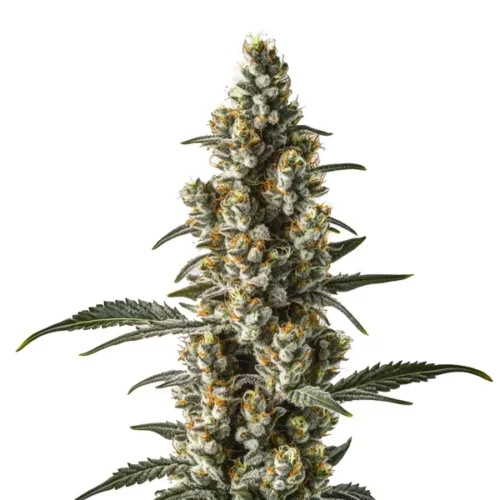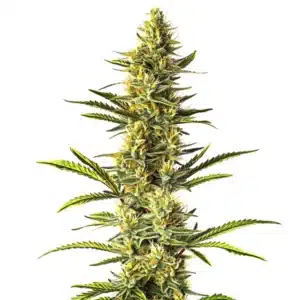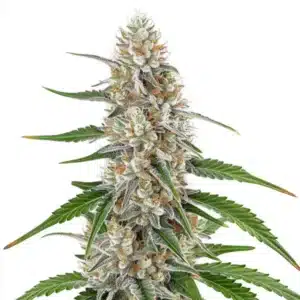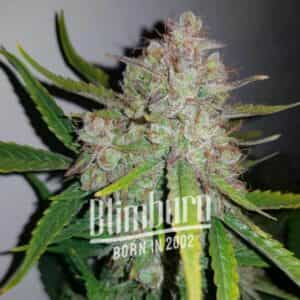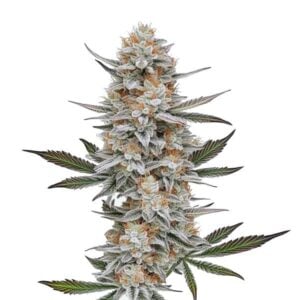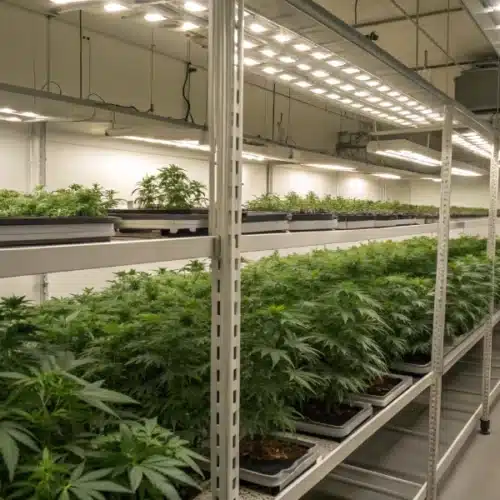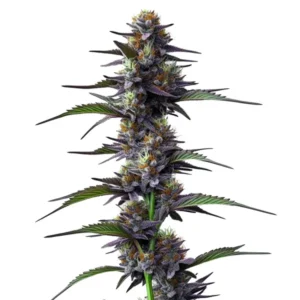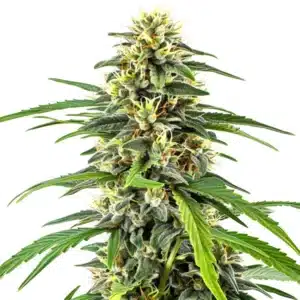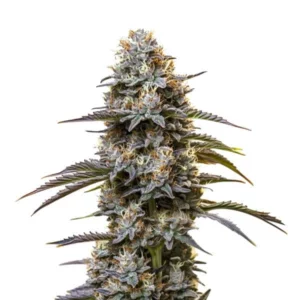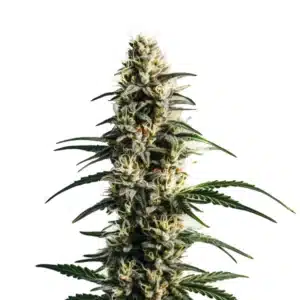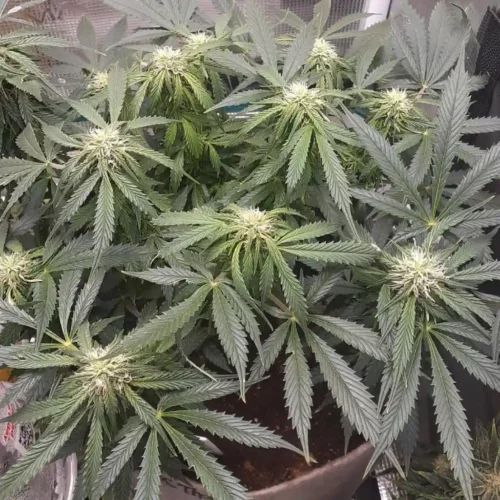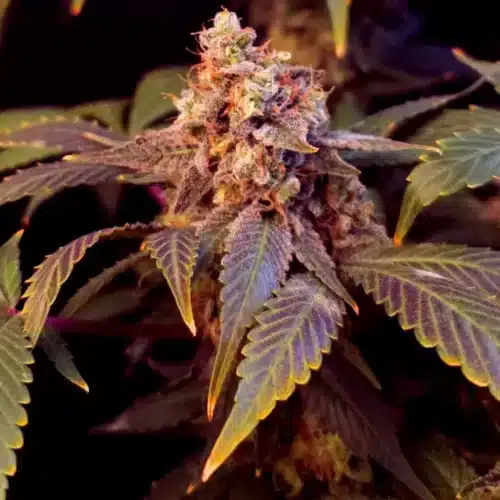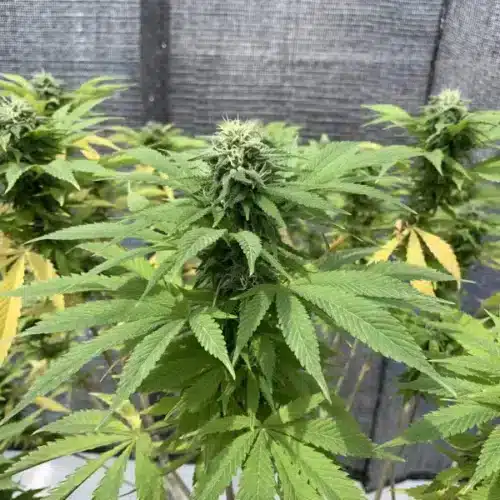Wild Thailand Ryder Strain Description
Wild Thailand Ryder strain is a celebrated autoflowering cannabis strain with a unique lineage derived from Wild Thailand and Ruderalis. This mostly Sativa strain has become a favorite among cultivators due to its energizing effects, vibrant flavors, and adaptability for beginner growers.
Recommended Strains
Wild Thailand Ryder Auto
 THC: 18% - 20%
THC: 18% - 20% Type of seed: Autoflowering
Type of seed: Autoflowering Phenotype: Mostly Sativa
Phenotype: Mostly Sativa Day to flower: 10 - 12 weeks
Day to flower: 10 - 12 weeks
This strain is renowned for its medium THC levels, ranging between 18% and 20%, combined with a low CBD percentage of 0.5%. Its buds feature a frosty, resinous coating and exude enticing citrus, fruity, and sweet aromas. The terpene profile includes limonene, myrcene, caryophyllene, pinene, and terpineol, contributing to its distinct flavor and uplifting effects.
The unique blend of these terpenes also supports the medicinal properties of Wild Thailand Ryder. Limonene is known for its mood-enhancing qualities, myrcene contributes to relaxation, while caryophyllene adds anti-inflammatory benefits. This well-rounded profile makes the strain suitable for both recreational users seeking an uplifting high and patients needing relief from various conditions.
Wild Thailand Ryder is ideal for recreational use, providing a happy and relaxed high, as well as medicinal purposes, such as alleviating depression, insomnia, and muscle spasms. Its manageable height of 4.92 ft (1.5 m) and 10-12 weeks flowering time make it a versatile option for both indoor and outdoor growers. Additionally, its resistance to common pests and diseases simplifies the growing process, making it an excellent choice for novices and experienced cultivators alike.
Promos & Deals
Environmental Requirements for Growing Wild Thailand Ryder Strain
To cultivate Wild Thailand Ryder strain successfully, providing optimal environmental conditions is essential. This strain thrives in a temperate climate with temperatures ranging from 70-80°F (21-27°C). Maintaining stable humidity levels between 40% and 50% during the flowering phase helps prevent mold or mildew.
When growing indoors, use high-quality LED grow lights or HPS lamps to ensure proper photosynthesis. Implement a light schedule of 18-20 hours during the vegetative stage and transition to 12 hours for flowering. Adequate airflow, provided by fans and exhaust systems, is crucial to maintain fresh air and prevent overheating. Regularly inspect your grow space for any light leaks during the flowering phase to avoid stress that could hinder bud development.
Outdoor cultivation requires ample sunlight and well-draining soil. Incorporating organic compost into the soil enhances nutrient availability and supports robust plant growth. In cooler climates, consider a greenhouse setup to extend the growing season. Protect plants from strong winds by positioning them near barriers or utilizing trellises for support. Additionally, mulching around the base of the plants helps retain soil moisture and regulate temperature.
Setting Up the Growing Space
Indoor Cannabis Cultivation
For indoor setups, select a grow tent or room with reflective materials to maximize light efficiency. Use pots with proper drainage and maintain a pH level of 6.0-6.5 in the growing medium. Regularly monitor environmental conditions to ensure optimal growth. Invest in a digital hygrometer and thermometer to track humidity and temperature accurately. Setting up an automated watering system can further streamline the cultivation process, especially for growers managing multiple plants.
Choose high-quality soil enriched with perlite or coco coir to enhance aeration and water retention. If opting for hydroponics, ensure the nutrient solution is balanced and oxygenated to promote healthy root development. Frequent calibration of pH and EC meters ensures consistency in nutrient delivery.
Outdoor Cannabis Cultivation
Outdoor growers should use large containers or fabric pots to manage soil quality effectively. Support the plant structure with stakes or trellises to prevent branches from breaking under bud weight. Ensure adequate spacing between plants to promote airflow and reduce disease risk. In areas prone to heavy rainfall, consider constructing a canopy or temporary shelter to protect plants from water damage.
Regularly check for pests such as caterpillars or aphids, which are common in outdoor grows. Introducing companion plants like marigolds or basil can help deter pests naturally. Additionally, watering in the early morning minimizes evaporation and allows plants to absorb moisture efficiently throughout the day.
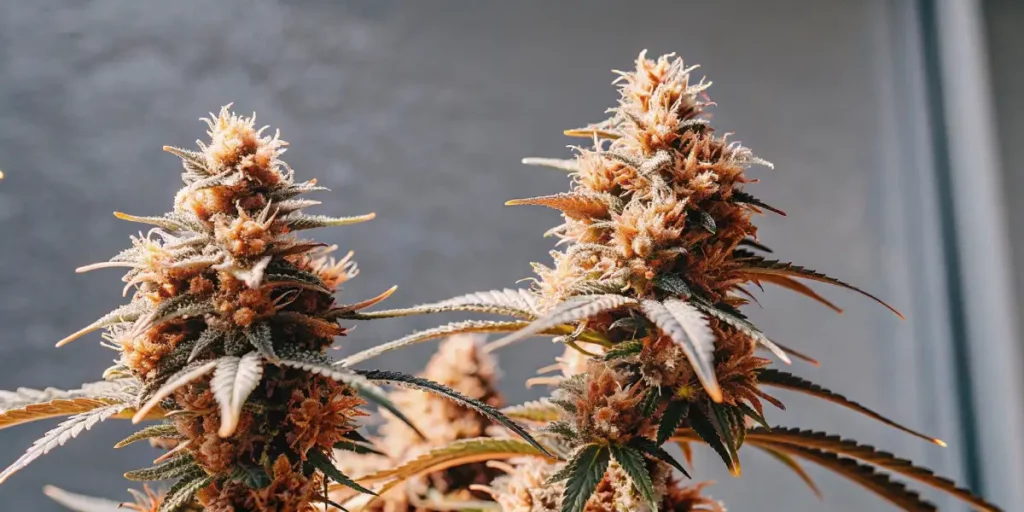
Propagation and Germination of Wild Thailand Ryder Strain
To achieve high germination rates, begin by soaking Wild Thailand Ryder seeds in distilled water or placing them on a damp paper towel for 24-48 hours. Maintain a warm environment between 70-85°F (21-29°C). Once taproots emerge, transfer seeds to a light, well-draining soil mix in seedling trays or small pots.
Keep the growing medium moist and provide indirect light during the first few days. Gradually increase light intensity as the seedlings develop. Once the seedlings have established a few sets of true leaves, transplant them into larger containers or outdoor plots. To further ensure healthy growth, use a seedling heat mat to maintain consistent soil temperatures, especially in cooler environments.
When transplanting, be cautious not to damage the delicate roots. Water the seedlings immediately after transplanting to reduce transplant shock and support root establishment. A light application of root stimulators can also promote vigorous growth during this stage.
Vegetative Phase of Wild Thailand Ryder Seeds
The vegetative stage is crucial for establishing strong, healthy plants. Provide 18-20 hours of light per day with consistent watering to keep the top inch of soil slightly moist. Use a nitrogen-rich fertilizer to encourage robust stem and leaf growth. Monitoring nutrient levels regularly prevents deficiencies that could hinder growth.
Employ training techniques, such as low-stress training (LST) or topping, to promote an even canopy and improve light penetration. Regularly prune lower branches to enhance airflow and reduce disease risk. Introducing silica supplements during this phase strengthens plant cell walls, making them more resistant to environmental stress and pest attacks.
As the plants grow, gradually increase pot size to accommodate root expansion. This practice prevents root-bound conditions and supports optimal nutrient uptake. Additionally, maintain consistent airflow within the grow space to minimize temperature fluctuations and encourage CO2 circulation.
Flowering Phase of Wild Thailand Ryder Strain
The flowering phase for Wild Thailand Ryder strain typically lasts 10-12 weeks. During this period, switch to a bloom-specific nutrient formula higher in phosphorus and potassium to support bud development. Reduce humidity levels to around 40-50% and maintain temperatures between 65-75°F (18-24°C).
Support the plant with stakes or trellises as buds develop to prevent branches from bending under their weight. Use a magnifying glass to monitor trichomes, harvesting when they appear milky with some amber for the best balance of cannabinoids. Installing a dehumidifier in the grow space helps maintain consistent humidity levels, reducing the risk of mold during the late flowering stage.
Regularly inspect plants for signs of nutrient imbalances, such as yellowing leaves or burnt tips. Adjust feeding schedules as necessary to optimize bud production. Flushing the plants with pure water during the final two weeks ensures a clean and flavorful harvest.
Cannabis Fertilization and Nutrition
Nutrition plays a pivotal role in the health and yield of Wild Thailand Ryder Strain. Choose a balanced fertilizer with macro and micronutrients, adjusting the feeding schedule according to growth stages. Incorporate supplements like beneficial microbes or bloom boosters to enhance plant performance. Using organic amendments, such as worm castings or bat guano, can further enrich the soil and promote sustainable growth.
Flush plants with pure water during the final weeks to remove nutrient buildup, ensuring a clean and flavorful harvest. For hydroponic growers, use reverse osmosis water for the flush to eliminate any residual salts effectively. Regular monitoring of plant health ensures a bountiful and high-quality yield.
Pest and Disease Control
Prevention is key to managing pests and diseases. Inspect plants regularly for signs of common issues like spider mites or powdery mildew. Maintain cleanliness in the grow area and introduce beneficial insects, such as ladybugs, to naturally combat pests. Setting up sticky traps can also help monitor and control flying pests effectively.
If infestations occur, use organic pest control products or neem oil to address problems without compromising the plant’s quality. Ensure adequate airflow and humidity control to minimize fungal infections. For outdoor grows, rotating crops and using companion planting techniques can further reduce pest pressure.
In severe cases, biological controls like Bacillus thuringiensis (Bt) can be used to target specific pests without harming beneficial insects. Always follow application guidelines to ensure effective results and maintain a healthy growing environment.
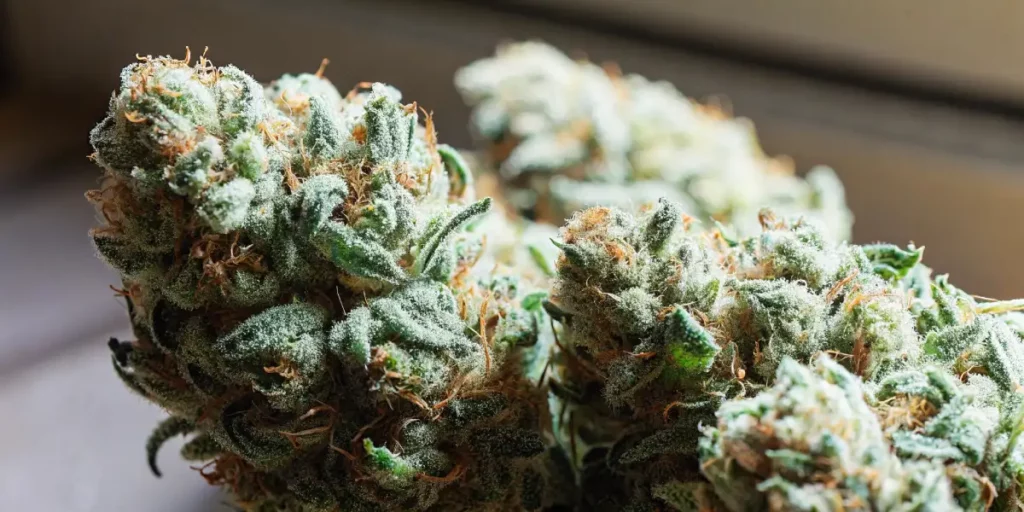
Harvesting and Curing Wild Thailand Ryder Strain
Proper harvesting and curing techniques are essential for preserving the strain’s aroma and potency. Use sterilized tools to cut branches and remove large fan leaves. Dry the buds in a dark, ventilated space at 60-70°F (15-21°C) with 50-60% humidity for 7-14 days.
After drying, place buds in airtight glass jars for curing. Open the jars daily for the first week to release excess moisture, then reduce the frequency. Curing enhances the flavor and potency, taking 2-4 weeks or more. Including humidity packs in the jars can help maintain an ideal curing environment, ensuring a consistent and high-quality end product.
For long-term storage, keep the cured buds in a cool, dark place away from direct sunlight. Vacuum-sealing the buds can further preserve their freshness and potency, making them suitable for extended use.
Similar Strains
Here are three strains similar to Wild Thailand Ryder strain:
- Chocolatte Thai Autoflower: A Sativa-dominant strain with citrus flavors and uplifting effects.
- Amnesia Haze Autoflower: Known for its energizing high and spicy, citrusy aroma.
- Moby Dick Autoflower: A high-yielding Sativa strain with sweet and earthy flavors.
Tips for Professional Growers
Professional growers can maximize yields by implementing advanced techniques like hydroponics or SCROG (Screen of Green). Monitor and adjust environmental conditions using automated systems for precision control. Utilize CO2 supplementation during the flowering stage to boost plant growth and bud density.
Regularly document growth stages and outcomes to refine cultivation practices over time. Leveraging advanced lighting technologies, such as full-spectrum LEDs, further enhances bud quality and energy efficiency. Additionally, networking with other professional cultivators can provide insights and strategies for overcoming challenges.
FAQs
What is the THC content of Wild Thailand Ryder?
The THC content ranges between 18% and 20%, offering a balanced potency suitable for various users.
How long does it take to grow Wild Thailand Ryder Strain?
The strain has a flowering time of 10-12 weeks and is ready for harvest year-round in suitable conditions.
What are the primary effects of Wild Thailand Ryder Strain?
Users report feeling happy, relaxed, and hungry, making it ideal for recreational and medicinal use.
Can beginners grow Wild Thailand Ryder?
Yes, the strain is beginner-friendly, with manageable growth requirements and resilience to environmental changes.
What flavors can I expect from Wild Thailand Ryder Strain?
The strain features a delightful mix of citrus, fruity, and sweet flavors.

